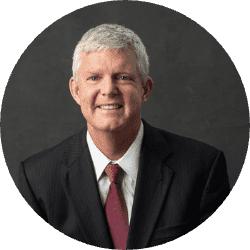In this last module of The Great Rethink series, we have been exploring the issue of Value, which goes far beyond just money. In fact, both of the previous modules in this series are important components of the Value discussion: e.g., Workplace issues like location, work environment, and work-life balance, and Inclusion issues like organizational culture, equity, recognition, collaboration, and respect.
Value, it seems, is an appropriate final topic as it brings together many of the themes we have been writing about for the past year. Hiring organizations and candidates alike have been reflecting on, and rethinking, Value: more and more they recognize how broad and varied a topic it really is, and all the many ways it impacts both hiring and retention.
In our kick-off piece, we acknowledged this complexity and the difficulty nonprofits have had, historically, talking about Value. So here, we have distilled a few thoughts and approaches to help readers leverage a new, expansive view on Value, and to engage in transparent conversations about what’s most important in hiring and retention decisions. Whether you are a candidate in search of a new opportunity, a nonprofit looking for that next potential advancement leader, or an advancement professional considering whether to move to another organization, we hope that these insights on Value will point your deliberations in the right direction.
Value is more than money: While money is the easiest aspect of Value to quantify, we believe that focusing exclusively on money or salary is counter-productive for organizations looking to hire and retain top talent. That money-first approach is also counter-productive for candidates looking for close alignment on career, work-life, mission, and personal values.
Yes, money is key, and if the salary is not commensurate with the position, then no amount of values alignment or other soft elements of Value will make up for it. But by the same token, rarely will money alone persuade a candidate to join, or a top performer to stay, when mission, culture and other important soft qualities are lacking. In today’s job market, money is just one of many factors that influence hiring and retention. It’s up to each advancement professional and each nonprofit organization to decide where money fits into the decision for them.
Reflect before you search: Reflection is a key first step in any search, for nonprofits and candidates alike. You can’t know where money fits into the Value hierarchy until you know what else it’s being balanced with. And you cannot know what other elements of Value – besides money – you will need, and want, to communicate to a candidate or potential employer unless you have done your homework and thought deeply about what Value means to you: both what you expect and what you offer.
We find that candidates are more successful if they have done this work, as are hiring organizations. It establishes up front what common ground could look like, how far each party may be willing to bend to accommodate the other, and where both sides might be able to creatively address each other’s needs and priorities. But those conversations cannot happen unless you are fully grounded in your own needs, goals, and priorities first.
Alignment doesn’t happen without dialogue: Today’s search processes are incredibly robust, factoring in a wide range of considerations. In that context, the definition of Value and how it’s recognized, as well as your specific personal or organizational values, can all be big components of a hiring decision – not just for those doing the hiring, but also those being hired. But how does one identify alignment on these important topics?
There is no substitute for authentic conversations about Value. Do your research, yes. But be prepared to ask and answer substantive questions. In fact, you will reveal as much about yourself or your organization in the questions you ask, as you will by the answers you give. In fact, wide-ranging, frank dialogue is probably the only way to investigate important non-monetary aspects of Value, like leadership approach, workplace culture, inclusivity, opportunities for growth, and mission impact.
Intangibles have concrete value: Hiring organizations these days are prioritizing a wide range of soft skills, like collaboration, leadership, strategic thinking, innovation, etc. Likewise, candidates have their own expectations about the soft elements of Value an employer should be offering, like a commitment to inclusivity, an attractive workplace culture, and mentorship and career growth opportunities. Such “soft” elements of Value are sometimes called intangibles, because they are harder to measure than “hard” elements like years of experience, or dollars raised, or donor relationships managed.
But make no mistake. These softer elements of Value are very powerful drivers of the employment decision, on both sides. Nonprofits hire for these qualities, and candidates screen employers on Value elements as well. So, one of the most important issues in hiring and retention is to be able to communicate the value of these intangibles: how candidates can leverage their talents and qualities to benefit the organization, and how a nonprofit can deploy its own version of “soft skills” to make the organization a wonderful place to work. Figure out what these intangibles are, and then be prepared to communicate them in a way that makes them real and concrete.
Unite “Value” and “core values”: In closing, it’s important to note the distinction between Value and personal core values, like kindness, respect, trust, dignity, generosity, and honesty. Coming out of the pandemic and the social upheavals of a few years ago, many nonprofit organizations – but candidates especially – have reflected on and rethought not just the meaning of Value, but how it impacts their overall work and career priorities. As part of that reappraisal, core values have become central to how we think about the work we do, and why we do it: ALG has heard from many candidates that they want their personal values to play a more important role in their work and career decisions.
So, as part of any dialogue around Value, we suggest that it’s important to model the core values you are seeking to match. As one of our recent panelists put it: “I try to express vulnerability as a way to invite others to express theirs, to help me understand, What does trust look like for you? What does open communication look like for you? And they may not speak directly to that question when asked, but if I can model those values as part of the conversation, the way they choose to respond gives me the information I need to recognize whether that alignment exists or not.”
With a new, more comprehensive view of Value, we now have many more ways of creating those incredibly special relationships where the stars align – where skills, talents, passions, and personal values meet a deserving organization and mission. As advancement professionals, it is incumbent on us to take advantage of this shift in thinking, to foster not just more satisfying careers, but more impactful ones as well.
Curious to learn more? Read the next article in this series, here.
Contributing authors:

Ron Schiller, Founding Partner and Senior Consultant, Aspen Leadership Group

Tom Herbert, Senior Consultant, Aspen Leadership Group

Clare McCully, Senior Consultant, Aspen Leadership Group


